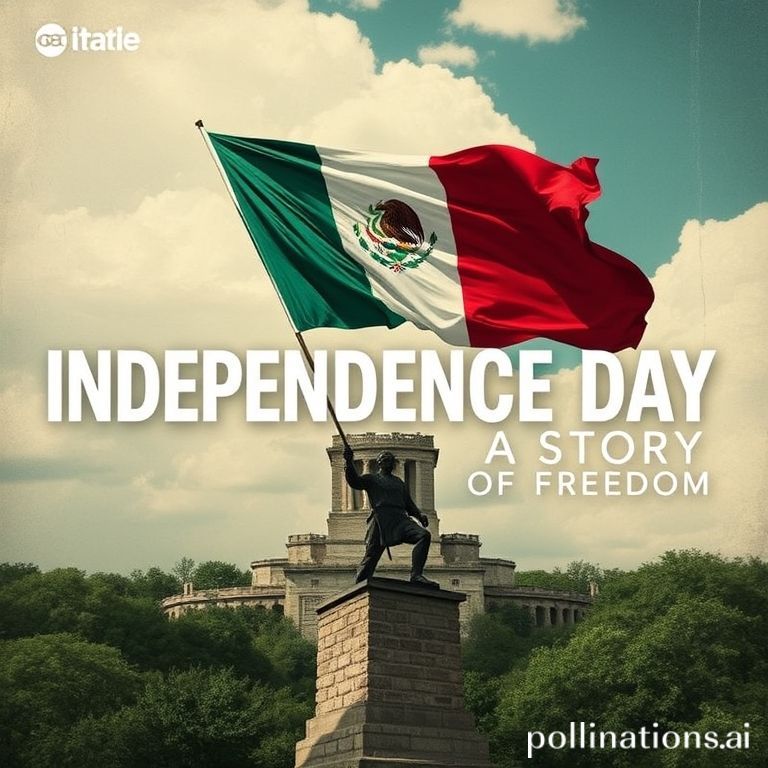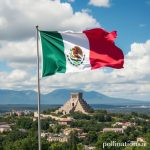Mexico’s Independence Day, celebrated every September 16th, is more than just a vibrant display of national pride. It’s a deeply significant commemoration of the courage, sacrifice, and unwavering spirit of a nation that fought for its freedom. Understanding the story behind this pivotal day offers a profound insight into Mexican identity and the long struggle for self-determination.
From the echoes of “El Grito de Dolores” to the triumphant entry into Mexico City, the journey to independence was a tumultuous and transformative period in Mexican history. Let’s delve into the key events and figures that shaped this defining moment.
The Seeds of Revolution
The seeds of the Mexican Revolution were sown in the late 18th and early 19th centuries, fueled by social and economic inequalities inherent in the Spanish colonial system. The “peninsulares,” Spaniards born in Spain, held most of the political and economic power, while “criollos,” Spaniards born in Mexico, were often relegated to secondary roles. This disparity, coupled with the exploitation of indigenous populations and other marginalized groups, created a volatile environment ripe for rebellion.
The Influence of Enlightenment Ideas
The Enlightenment, with its emphasis on individual rights, liberty, and equality, played a crucial role in inspiring revolutionary movements around the world, including in Mexico. Criollos, often educated and well-traveled, were exposed to these ideas and began to question the legitimacy of Spanish rule. They envisioned a Mexico where they could govern themselves and create a more just society.
El Grito de Dolores: The Cry for Independence
The spark that ignited the Mexican War of Independence was “El Grito de Dolores” (The Cry of Dolores), delivered by Miguel Hidalgo y Costilla, a Catholic priest, on September 16, 1810, in the town of Dolores (now Dolores Hidalgo, Guanajuato). Hidalgo’s impassioned call to arms galvanized the oppressed masses, igniting a widespread rebellion against Spanish authority.
- Hidalgo’s message resonated deeply with indigenous populations and mestizos, who had long suffered under Spanish rule.
- The Grito de Dolores is considered the official start of the Mexican War of Independence.
- Every year on September 15th, the President of Mexico re-enacts El Grito from the balcony of the National Palace in Mexico City, followed by celebrations and fireworks.
Key Figures in the Independence Movement
The Mexican War of Independence saw the rise of numerous influential figures who dedicated their lives to the cause of freedom. Besides Miguel Hidalgo, other notable leaders include:
- José María Morelos: Another priest and brilliant military strategist who took over the leadership of the independence movement after Hidalgo’s execution.
- Vicente Guerrero: A key insurgent leader who continued the fight after Morelos’s death and eventually became the second President of Mexico.
- Agustín de Iturbide: A royalist general who initially fought against the insurgents but later switched sides and played a crucial role in securing independence.
The Path to Independence
The Mexican War of Independence lasted for over a decade, marked by intense fighting, political intrigue, and periods of stalemate. The insurgents faced numerous challenges, including a lack of resources, internal divisions, and the superior military power of the Spanish colonial army. Despite these obstacles, they persevered, fueled by their unwavering belief in the cause of freedom.
The Treaty of Córdoba
In 1821, Agustín de Iturbide, recognizing the changing political landscape and the growing support for independence, negotiated the Treaty of Córdoba with the Spanish Viceroy, Juan O’Donojú. The treaty recognized Mexico as an independent nation under a constitutional monarchy.
The Triumphant Entry into Mexico City
On September 27, 1821, the Army of the Three Guarantees, led by Iturbide and Guerrero, triumphantly entered Mexico City, marking the official end of the Mexican War of Independence. Mexico had finally achieved its long-sought freedom after more than 300 years of Spanish rule.
Conclusion
Mexico’s Independence Day is a testament to the enduring human spirit and the unwavering pursuit of freedom and self-determination. The story behind this day is a reminder of the sacrifices made by generations of Mexicans who fought for a better future. As Mexicans celebrate their independence, they honor the legacy of those who paved the way for a free and sovereign nation.
If you enjoyed learning about the story of Mexico’s Independence Day, be sure to check out our other articles on Mexican culture and history! Share this article with your friends and family to spread the knowledge!
IMAGE: A vibrant and colorful scene depicting the reenactment of “El Grito de Dolores” in a town square in Mexico. The president or a local leader is on a balcony, waving the Mexican flag and shouting “Viva Mexico!” The crowd below is cheering, waving flags, and dressed in traditional Mexican clothing. Fireworks explode in the background, illuminating the night sky. The overall mood is celebratory and patriotic. Use bright and saturated colors with dynamic lighting. The style should be realistic but with a touch of artistic flair.


